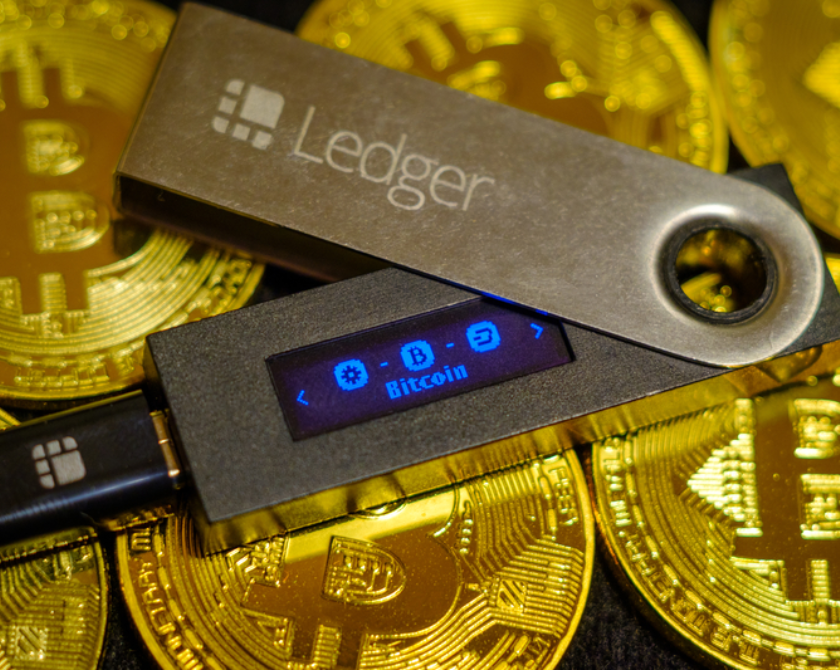Introduction: Safeguard Your Crypto Assets with a Hardware Wallet
Cryptocurrency has revolutionized the financial world, offering exciting opportunities for investors and enthusiasts. However, the increasing prevalence of cyber threats necessitates the need for robust security measures. One effective way to protect your digital assets is by using a crypto hardware wallet. This comprehensive guide will walk you through the process of using a crypto hardware wallet, providing invaluable insights and practical tips to ensure the security of your cryptocurrencies.
How to Use a Crypto Hardware Wallet
Cryptocurrency hardware wallets provide an offline storage solution that protects your private keys and digital assets from online threats. By securely storing your keys on a hardware device, you can mitigate the risks associated with hacking, phishing attacks, and malware. Follow these steps to use a crypto hardware wallet:
- Step 1: Choose a Reliable Hardware Wallet The first step in using a crypto hardware wallet is selecting a reputable and reliable device. Several well-known hardware wallet brands offer top-notch security features and user-friendly interfaces. Some popular options include Ledger Nano S, Trezor Model T, and KeepKey. It is essential to purchase your hardware wallet directly from the manufacturer or authorized resellers to avoid potential tampering or counterfeit devices.
- Step 2: Set Up Your Hardware Wallet Once you’ve acquired a hardware wallet, it’s time to set it up. Begin by visiting the official website of the wallet manufacturer to download the appropriate software for your device. Follow the provided instructions to install the software on your computer or mobile device. After installation, initialize your hardware wallet by following the on-screen prompts and creating a strong, unique PIN code.
- Step 3: Generate a New Wallet After setting up your hardware wallet, you need to generate a new wallet. This process usually involves creating a seed phrase—a list of randomly generated words that serve as a backup to your private keys. Write down the seed phrase and store it in a safe place. It’s crucial to keep your seed phrase offline and away from prying eyes or potential threats.Pro Tip: Consider using a metal or fireproof safe to store your seed phrase securely.
- Step 4: Fund Your Hardware Wallet Now that your hardware wallet is set up and you have your seed phrase, it’s time to fund your wallet with cryptocurrency. Depending on the wallet’s software, you may need to install specific cryptocurrency apps or wallets on your computer or mobile device. Follow the instructions provided by the manufacturer to install the necessary applications and transfer your desired cryptocurrencies to your hardware wallet address.Note: Ensure that you double-check the wallet address before initiating any transactions to avoid potential errors or loss of funds.
- Step 5: Manage Your Crypto Assets Once your hardware wallet is funded, you can effectively manage your crypto assets. The wallet’s software interface will provide you with a user-friendly platform to monitor your balances, send and receive cryptocurrencies, and explore additional features. Familiarize yourself with the wallet’s functionalities to make the most of its security features and convenience.Pro Tip: Regularly update your hardware wallet’s firmware and software to benefit from the latest security enhancements and performance improvements.
- Step 6: Secure Backup and Recovery Backup and recovery options are vital to safeguard your digital assets in case of unforeseen circumstances. Most hardware wallets offer backup and recovery functionalities using the seed phrase generated during the initial setup. Ensure that you follow the manufacturer’s instructions to create and securely store additional backups of your seed phrase. Consider using offline or encrypted storage solutions to minimize the risk of unauthorized access.Note: Never store your seed phrase digitally or on cloud storage, as it increases the vulnerability to cyber threats.
- Step 7: Additional Security Measures While hardware wallets provide excellent security, it’s essential to implement additional measures to enhance your overall crypto asset protection. Some recommended security practices include enabling two-factor authentication (2FA) whenever possible, using strong and unique passwords, and regularly updating your computer’s antivirus software. Stay vigilant against phishing attempts and suspicious links to avoid falling victim to online scams.Pro Tip: Avoid accessing your hardware wallet through public or unsecured Wi-Fi networks to minimize the risk of potential hacking attempts.
Congratulations! You’ve successfully learned how to use a crypto hardware wallet to safeguard your digital assets. By following these steps and implementing recommended security practices, you can enjoy peace of mind and protect your cryptocurrencies from unauthorized access.

Conclusion: Protect Your Crypto Assets with Confidence
In an era where cybersecurity threats are prevalent, protecting your crypto assets is of paramount importance. By utilizing a crypto hardware wallet, you can enhance the security of your digital investments and enjoy peace of mind. In this guide, you’ve learned the step-by-step process of using a hardware wallet, essential security measures, and valuable tips to ensure the safety of your cryptocurrencies. Start implementing these practices today and embark on a secure crypto journey!
FAQs about Using a Crypto Hardware Wallet
1. How secure are crypto hardware wallets?
Crypto hardware wallets are designed to provide maximum security for your digital assets. By storing your private keys offline, hardware wallets protect against online threats like hacking and phishing attacks. However, it’s crucial to follow best practices, such as purchasing devices from authorized sources and securing your seed phrase properly.
2. Can I store multiple cryptocurrencies on a hardware wallet?
Yes, most hardware wallets support a wide range of cryptocurrencies. However, it’s essential to check the wallet’s compatibility list before purchasing to ensure that it supports the specific cryptocurrencies you intend to store.
3. Can I recover my crypto assets if I lose or damage my hardware wallet?
Yes, you can recover your crypto assets if you lose or damage your hardware wallet. During the initial setup, you generate a seed phrase that serves as a backup. By using this seed phrase, you can restore your wallet on a new hardware device and regain access to your funds.
4. Are hardware wallets user-friendly?
Hardware wallets are designed with user-friendliness in mind. Most manufacturers provide clear instructions and intuitive interfaces to guide users through the setup and management processes. With a bit of familiarity, even beginners can navigate hardware wallets with ease.
5. Can I use a hardware wallet with mobile devices?
Yes, many hardware wallets offer mobile apps or companion apps that allow you to manage your cryptocurrencies conveniently from your smartphone. Check the manufacturer’s website or app store for compatibility information and installation instructions.
6. Are hardware wallets completely immune to hacking?
While hardware wallets provide robust security, it’s essential to remain vigilant and follow best practices to minimize the risk of hacking. Ensure that you purchase your hardware wallet from trusted sources, update firmware and software regularly, and avoid interacting with suspicious links or websites.


